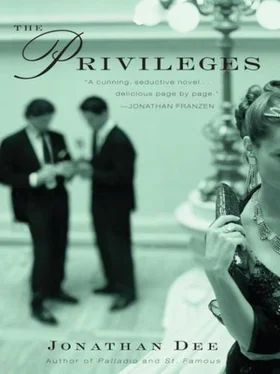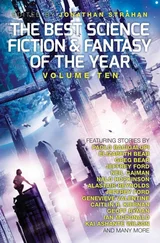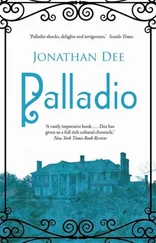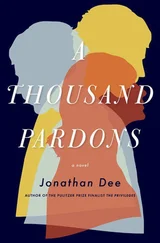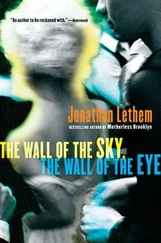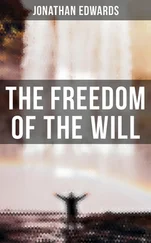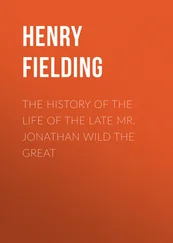The research Nikki was doing for Agnew lost what little structure it had when summer came; by the end of August their scheduled conferences in his office had devolved into meetings for lunch or coffee or even just a standing invitation to show up at his apartment on South Blackstone and have a glass of wine. It was all well above board, though; Agnew was one of the few cult professors who had no reputation for trying to get over on his grad students, and in any case Nikki never once knocked on his apartment door without finding at least two or three others, usually more — grad students, faculty colleagues, friends of mysterious art-world provenance — already lounging inside. Jonas was curious about these salons but also too self-conscious about his own youth and ignorance to want to go with her. But before long Agnew himself made a point of asking Nikki where her boyfriend—“child bride,” actually, was the expression he used — spent these afternoons and evenings while his paramour drank cheap wine and talked about art. Surely not home alone? When the teasing got to be too much for her, Nikki asked Jonas again if he would please reconsider, just for her sake, and he said yes.
The apartment itself was scruffy but large with, as Agnew said, a great view of the lake if you were willing to let someone hang you out the living room window by your ankles. Nikki came bearing a CD full of images Agnew needed to copy for one reason or another and so the two of them went straight into his study. Jonas felt like people were smirking at him a little bit and so rather than try to horn in on a conversation he acted as if he were in a museum, touring the perimeter of each room, on whose walls hung dozens of small-scale artworks in cheap stationery-store frames. He didn’t recognize any of it. Many of the drawings and paintings (anyone who’d taken Agnew’s Intro to Seeing knew his dismissive views on photography) were unsigned. In the kitchen, an odorous thicket of old wine bottles and impromptu ashtrays, Jonas got to staring at one particular sketch, framed so that the frayed edge from the spiral notebook binding was still visible, of some kind of industrial landscape that kept yielding details that made less and less sense. The sky was filled with numbers, written very carefully as if in a sequence. Just a few feet from the walls of a mysterious factory or plant — which had no doors or windows, only smokestacks — there was a scaled-down forest about the size of a traffic island, with a lake or pond in it in which birds flew underwater.
“Recognize it?” a voice said; Jonas turned, embarrassed by how close his face was to the drawing itself, and saw Agnew. And though he hadn’t recognized anything until that moment, now he did.
“It’s the guy from outside the Institute,” he said.
Agnew clapped him on the shoulder. “Good eye,” he said. “Actually, I have to ask you not to mention to any of your art-world friends that you saw this here. I am in serious Dutch with Mr. Strauss’s gallery over having this piece.”
“I have no art-world friends,” Jonas said. “What do you mean, his gallery? He has a gallery?”
Agnew explained to him, while opening another bottle of wine, that Martin Strauss, far from being Agnew’s secret, was actually quite a name in outsider-art circles, a phrase that was accompanied by a roll of Agnew’s eyes. Strauss was showing in New York and in Miami; though he was somewhere in his thirties, money from the sales of his work, which Agnew guessed might have been as much as thirty or forty thousand dollars a year, went straight to his elderly parents in their capacity as his guardians. Strauss himself had certain needs that had to be met but beyond that he had no use for the money at all. Agnew technically had given him money in exchange for this drawing—“I give him something every time I see him”—but the gallery owner considered this thievery because, he said, the artist had no way of properly valuing his own work. “You can imagine,” Agnew said, “how provocative I find that idea. So I torture this guy a little by maintaining the friendship with his client, even though I am, I suppose, legally speaking, in the wrong.”
Jonas was conscious that he was actually hunched over a little in order not to look down on his host. So-called outsider art, Agnew went on, was nowadays pretty much the sole focus of his own research, and for that matter of his interest in art, period. “And not ‘outsider’ as in ‘self-taught,’ either,” he said. “That’s one of the many problems with the influx of people like this schmuck with his gallery — in an effort to maximize their own exploitation, they broaden the definition until it becomes meaningless. So no, none of that condescending Grandma Moses folk-art bullshit. I’m interested only in the artistic expression of those whose mental or psychological circumstances lie outside what society has defined as acceptable.”
“The insane?” Jonas asked. Agnew frowned. “I try not to romanticize them,” he said, “for good or bad. Whatever they may have done to marginalize themselves is immaterial. As artists, they sit down to engage their art with absolutely no sense of a viewer, of history, of an outside world. Does that make them insane? You look at what they produce and the only proper answer to that question becomes, What’s the difference?”
Jonas had many more questions, but just then Nikki walked in and stopped short in surprise. “There you are,” she said uncertainly.
“Ah,” Agnew said, “the power couple. Listen, Nikki, there’s one of those — God, it makes my mouth hurt just having to say it—‘outsider art fair’ fiascoes in town next month, and I was going to ask if you’d go. Larry Masters will have a little booth there — Larry, that’s the dealer I was telling you about, Jonas, the one who accuses me of devaluing Martin Strauss — and so I can’t go, he hates me, he probably has some kind of court order waiting for me, actually. But why don’t the two of you go? There should actually be some great stuff there, some Wölfli, I think, some Ramirez, some Dadd. You’ll do it?”
They glanced wide-eyed at each other; then Jonas turned back to Agnew and nodded.
“Excellent. About time we got young Mr. Morey here on the payroll. Just an expression, Jonas, don’t look like that. Not that you need it, like most of these indigents. In fact, maybe you can put us on the payroll, right?”
Jonas smiled nervously. He was surprised to learn that Agnew knew who he was.
“Seriously,” Agnew said, “you’d be doing me a real favor if you’d return this. I love it, but I don’t feel like getting sued over it. Tell him who it’s from.” He took the framed Strauss down from the kitchen wall and handed it to Jonas.
“You can’t,” Jonas said without thinking. It was too extraordinary; he didn’t want to be the one to hand it over. “It’s like — I don’t know. It’s like putting a kid into foster care. There has to be some other way.”
Agnew’s eyebrows were up, though not, it seemed, in a bad way. “Well, I’m glad you like it,” he said. “But, like it or not, it is in the world, and has been assigned a value in that world, quite independent of what you or I or the artist think about that. Or can do to stop it, for that matter. Outsider art is very hot right now. I’ve been happy to hang this piece here but now it’s time for it to go, as they say, into the system.”
Jonas looked at it again. He was flushed with the awareness of Agnew’s interest in him, in what he was going to do; he wasn’t courting that interest, but still, he could feel it. Something about the drawing was too compelling to just let go of like that. It wasn’t like it spoke to him or anything. It resisted all that — you could admire it, but you had no real hope of interpreting it. It was an artifact of an unimaginable state of mind. There was no dialogue going on there, no puzzle to solve, no meaning to extract. Or, if it had a meaning, it was a meaning he had no hope of understanding.
Читать дальше
